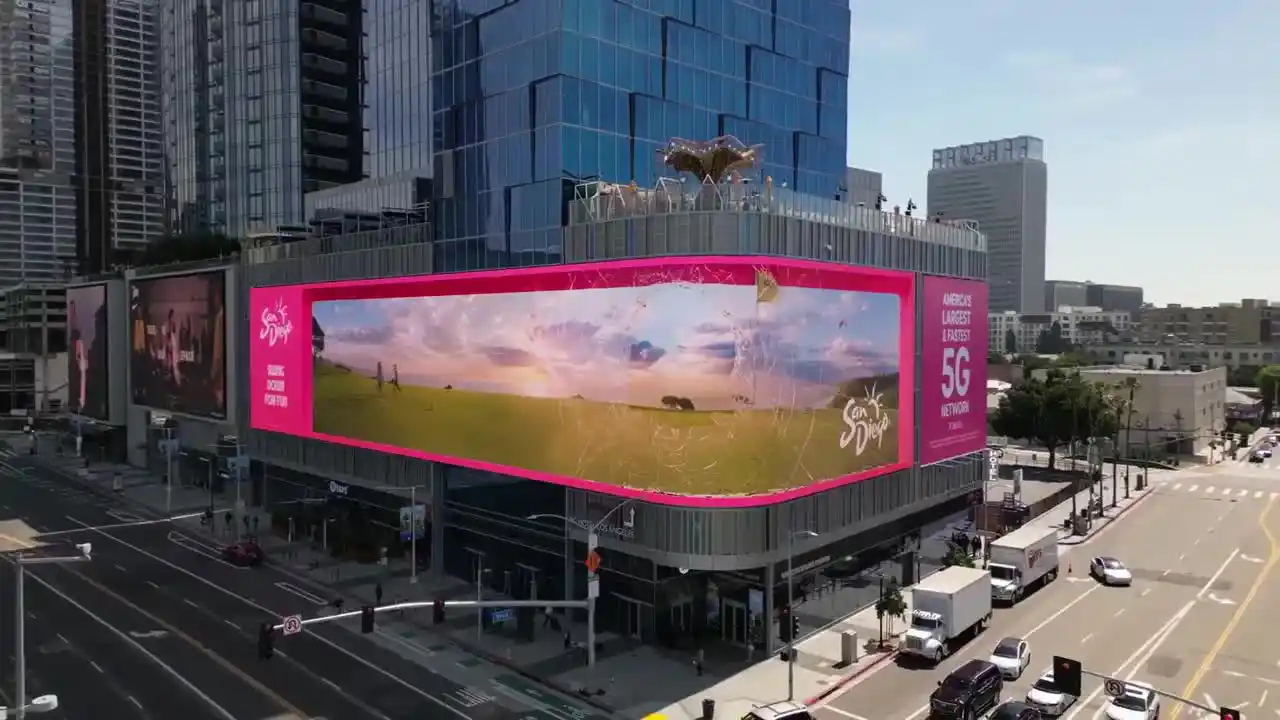
Outdoor LED displays have become a cornerstone of modern digital signage, offering unmatched visibility, flexibility, and impact. However, the success of your message isn't just about hardware quality or screen size — it's about how well your content is optimized for the unique challenges of outdoor environments.
From extreme brightness conditions to diverse viewing distances and dynamic traffic patterns, optimizing visual content for outdoor LED displays requires a blend of creative design, technical precision, and environmental awareness. In this article, we present seven expert strategies that go beyond aesthetics, focusing on technical best practices to ensure your content delivers maximum visibility, engagement, and ROI.
In fast-moving outdoor environments, viewers often only have a few seconds to process your message. This makes simplicity not just a design choice — it’s a necessity.
Keep primary messaging within 5–7 words
Use bold sans-serif fonts (e.g., Arial Bold, Helvetica Black) for enhanced legibility
Maintain at least 40% negative space to reduce visual clutter
Focus on a single core message per frame
This minimalist approach ensures high readability even under motion and time constraints — particularly crucial for highway billboards and urban transit displays.
Color contrast is one of the most critical factors in ensuring visibility across different lighting scenarios.
| Scenario | Recommended Colors | Visibility Boost |
|---|---|---|
| Daylight | White on Black | +83% |
| Midday Sun | Yellow on Blue | +76% |
| Nighttime | Cyan on Black | +68% |
Avoid using color combinations with less than 50% luminance difference, especially during daylight hours when sunlight can wash out low-contrast visuals.
Understanding the relationship between viewing distance and content layout is essential for technical effectiveness.
Minimum Font Height (inches) = Viewing Distance (feet) / 50
Optimal Image Size (in inches) = (Viewing Distance × 0.6) / Screen PPI
For example, a display visible from 500 feet away should use:
Minimum font height: 10 inches
Main graphics occupying 60% of screen area
These formulas ensure that typography and imagery remain clearly readable without distortion or pixelation.
While animation increases attention by up to 40%, improper implementation can lead to viewer fatigue or distraction.
Animation duration per element: 3–5 seconds
Transition speed: 0.75–1.25 seconds
Frequency: 1 animated element every 7–10 seconds
Use directional motion (e.g., left-to-right, top-down) to guide attention toward key elements like call-to-action (CTA) buttons or brand logos.
Consistent content updates keep your display relevant and engaging over time.
Top-performing messages: Rotate every 12–15 days
Promotional campaigns: Update every 36–72 hours
Real-time data (weather, time, events): Refresh hourly or more frequently
Implement A/B testing with multiple content variations to identify what resonates best with your audience.
Outdoor LED displays must contend with variable weather and light levels. Your content should adapt accordingly.
Daylight Mode: Increase contrast by 30%
Rainy Conditions: Thicken fonts by 15% for better legibility
Night Operation: Reduce brightness to 65% of daytime levels to avoid glare and energy waste
Advanced systems can integrate real-time sensors and CMS logic to automatically adjust content parameters based on ambient conditions.
Many regions impose legal limits on brightness, flicker, and flash frequency to prevent distractions or hazards.
Maintain at least 50% static content in animated sequences
Cap peak brightness at 5000 nits
Include mandatory spacing between rotating messages
Limit flashing rates to below 3 Hz
By following these guidelines, you not only comply with local regulations but also protect public safety while maintaining effective messaging.
To elevate your system performance, consider implementing these professional-level enhancements:
Real-time analytics integration for content performance tracking
Automated content adaptation using weather APIs
Dynamic resolution scaling via ambient light sensors
Predictive scheduling powered by traffic pattern data
These integrations turn your LED display into an intelligent communication platform, capable of adapting in real time to its environment and audience behavior.
Regular maintenance ensures consistent image quality and extends the life of your LED hardware.
Bi-weekly: Pixel health diagnostics
Monthly: Color calibration tests
Quarterly: Brightness uniformity checks
Annually: Full system audit and content optimization review
Proper maintenance reduces long-term costs and preserves display clarity, which directly impacts content effectiveness.
Optimizing content for outdoor LED displays is not just about creativity — it's a multidisciplinary effort combining visual design, environmental engineering, and data-driven decision-making. By following these seven proven strategies, you’ll ensure your content remains clear, compelling, and compliant across any setting.
Whether you're managing a single billboard or an entire network of outdoor displays, integrating these technical insights will significantly improve your message retention, audience engagement, and return on investment.
Hot Recommendations
Hot Products
Get a Free Quote Instantly!
Talk to Our Sales Team Now.
If you are interested in our products, please contact us promptly
Reach out to our sales team to explore customized solutions that perfectly meet your business needs and address any questions you may have.
Email Address:info@reissopto.comFactory Address:Building 6, Huike Flat Panel Display Industrial Park, No. 1, Gongye 2nd Road, Shiyan Shilong Community, Bao'an District, Shenzhen city , China
whatsapp:+8615217757270